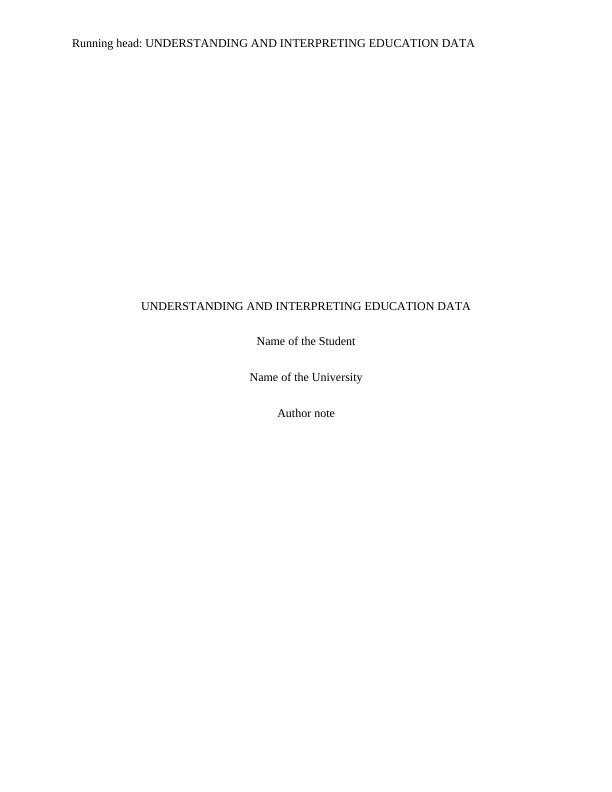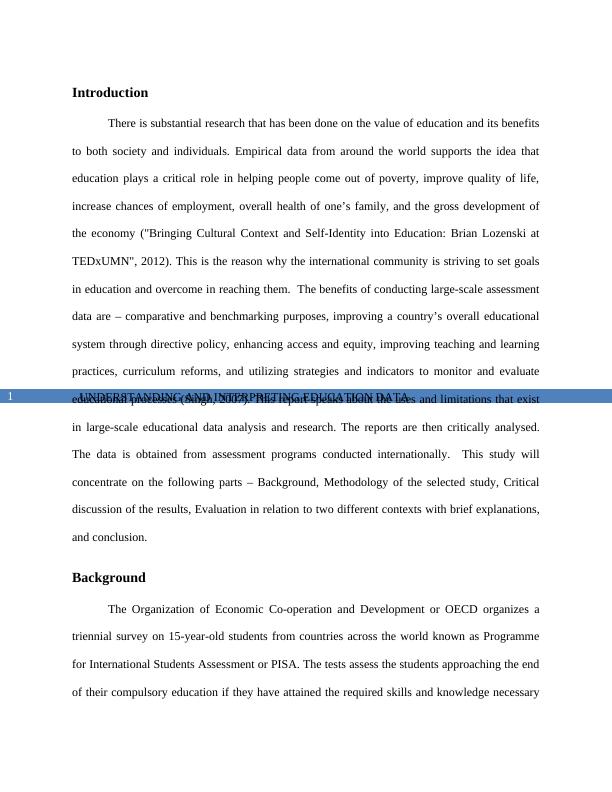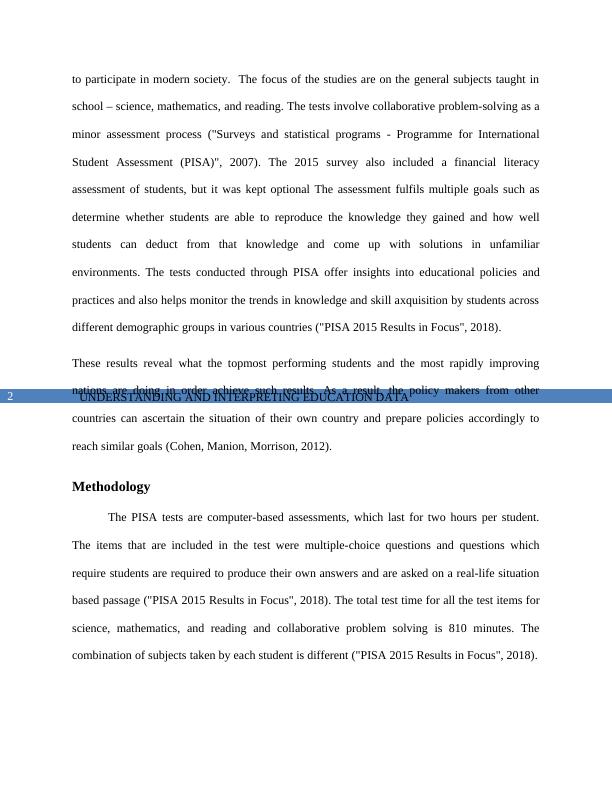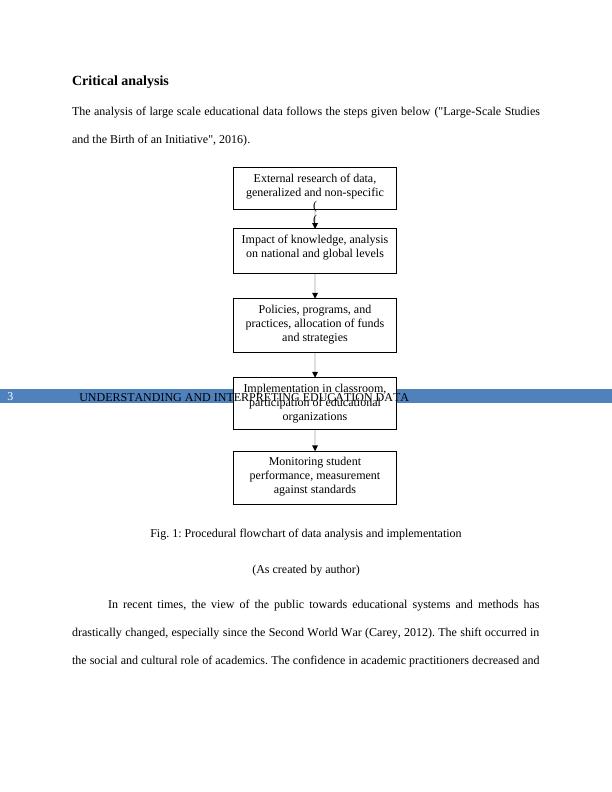Understanding and Interpreting Education Data
Critically analyse and evaluate a large-scale educational study, examining its purposes, methods, data, conclusions, and recommendations, and evaluating the limitations and uses of the study's outcomes for two different educational contexts.
14 Pages3260 Words3 Views
Added on 2022-12-20
About This Document
This report explores the uses and limitations of large-scale educational data analysis and research. It discusses the results of international assessments, such as the Programme for International Student Assessment (PISA), and their implications for educational policies and practices. The report also examines the impact of socio-economic factors and student well-being on educational outcomes.
Understanding and Interpreting Education Data
Critically analyse and evaluate a large-scale educational study, examining its purposes, methods, data, conclusions, and recommendations, and evaluating the limitations and uses of the study's outcomes for two different educational contexts.
Added on 2022-12-20
ShareRelated Documents
End of preview
Want to access all the pages? Upload your documents or become a member.
PISA Examination Based on Bhutanese Educational Context
|24
|5504
|95
Large Scale Educational Data: TEQSA Higher Education Standards Framework (HESF) Domain 2
|19
|4603
|53
Assessment in Education PDF
|12
|3459
|17
Review of Organizational Learning and Development
|10
|622
|32
Analysis of ICT and its impact on education and learning methods
|10
|2415
|447
Assessment of Hard to Assess Skill
|5
|829
|467




